Here are stories of 11 extraordinary women immigrants. Despite the limits that are often placed on women and immigrants, these 11 pioneers have made impressive contributions in fields as varied as medicine, acting, activism and physics.
Elizabeth Blackwell, Physician / Activist, 1821 – 1910
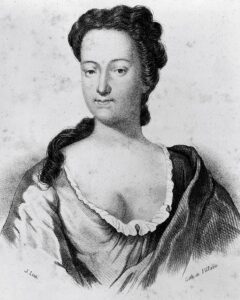
Source: Wellcome Images via Wikimedia Commons
Elizabeth Blackwell was motivated to become the first female physician in the United States by the belief that women might receive better medical care from female physicians. More than a century later, there’s research that backs up her theory. In 1849, she graduated from the only medical school that would admit a woman at the time, Geneva Medical College (a forerunner of Hobart College). She had hoped to become a surgeon, but that dream was dashed when she lost an eye to an infection she contracted from a patient. When she opened her own practice, few patients would be treated by her since women in the medical field were assumed to be abortionists. Despite these setbacks, Blackwell succeeded in opening the New York Infirmary for Indigent Women and Children, which still operates today as the not-for-profit New York-Presbyterian Lower Manhattan Hospital.
Blackwell was also active in various reform movements, including campaigns for women’s rights and better preventive medicine. She even collaborated with Florence Nightingale and other prominent women in medicine to found the first medical school for women in her native England. Blackwell’s accomplishments have been honored with a statue at her alma mater, induction into the National Women’s Hall of Fame and a Google Doodle on her 197th birthday.
Mary Harris “Mother” Jones, Activist, 1837 – 1930
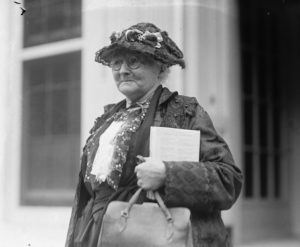
Source: Washington Area Spark/Library of Congress via Flickr
Marry Harris Jones was a troublemaker. She made what Rep. John Lewis would have called “good trouble.” In fact, a prosecutor labeled 65-year-old Jones “the most dangerous woman in the country” when she was jailed for speaking at a meeting of striking mine workers. She found her life’s work as a labor activist in middle age and adopted the name “Mother Jones” as a reflection of the protectiveness she felt for the much younger workers she championed. She had lost her own children and husband to yellow fever many years prior.
Jones was a child when she and her family immigrated to Canada during the Irish Potato Famine. She came to the United States as an adult to work. It was the Great Chicago Fire of 1871 that sparked her interest in labor organizing after destroying her business and much of Chicago. While helping to rebuild Chicago, Jones joined a labor federation and became steadily more involved in organizing labor strikes. Her work spread from Chicago across the country giving speeches, organizing on behalf of unionizing efforts and encouraging striking workers. Jones was so relentless that for some time she had no permanent address. She attracted national attention when she organized the “March of the Mill Children,” a march of child millworkers to President Roosevelt’s doorstep. Almost a century after she began her work, a group of journalists chose her name to represent their new, progressive-oriented magazine, Mother Jones.
Marlene Dietrich, Actress, 1901 – 1992
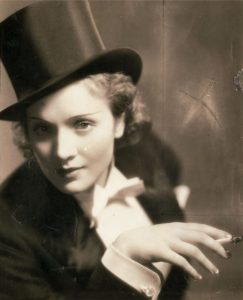
Source: Paramount Pictures via
Wikimedia Commons
Groundbreaking German American actress and style icon Marlene Dietrich pushed boundaries in every area of her life. After she starred in the first German feature-length “talkie,” the film’s Hollywood director encouraged Dietrich to move to the United States to pursue a career in filmmaking. She was an immediate success in the U.S., starring in a series of blockbusters and garnering an Academy Award nomination. She was known for her glamorous, androgynous looks and preference for wearing men’s clothing, once remarking, “I am, at heart, a gentleman.”
The advent of World War II activated her social conscience. Dietrich was fiercely opposed to the rise of Hitler and the Third Reich, turning down lucrative offers to return to the German film industry. When she did return to Europe, it was to provide so many morale-boosting performances to U.S. soldiers that one observer commented that she was “at the front lines more than General Eisenhower.” In the U.S., she produced anti-Nazi albums, raised money through war bonds and financed the escapes of Jewish German friends. Her work earned her the Presidential Medal of Freedom, which she considered the highest honor she ever received.
From one of her earliest roles, when she dressed in a men’s tailcoat and kissed a woman, to her late-career popularity as a cabaret star, when she was known for wearing men’s costumes and singing songs written for men, Dietrich was never shy about challenging gender roles. She was equally fearless in her personal life. For the era, Dietrich was relatively open about her bisexuality, referring to her female lovers as her “Sewing Circle.” She remains an icon in the LGBTQ+ community for her willingness to live the life she wanted in defiance of social norms.
Chien-Shiung Wu, Physicist, 1912 – 1997
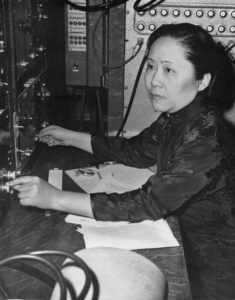
Source: Smithsonian Institution
via Wikimedia Commons
Chien-Shiung Wu was christened the “First Lady of Physics” for her extraordinary accomplishments in the field, which included work on the atom bomb and a discovery that many think should have garnered her a Nobel Prize.
After immigrating from China, Wu attended Berkeley University, where she obtained a PhD in physics. Despite the sexism and anti-Asian prejudice of the World War II era, she was so productive in the field that she was recruited for the Manhattan Project. Her research proved key in the United States’ successful effort to create an atomic bomb. Wu is best known for her experiment proving that during beta decay the “law of conservation of parity” does not apply, a significant development in the study of atoms. Her work was controversially passed over for a Nobel Prize, though others who worked on the project were recognized. Some believe that this was because of her gender. Over the course of her career, Wu became the first female president of the American Physical Society, the first female winner of the Wolf Prize in Physics and first female recipient of an honorary degree from Princeton University. She capitalized on her success to call for better treatment of women in science, famously asking an MIT symposium, “whether the tiny atoms and nuclei or the mathematical symbols or the DNA molecules have any preference for either masculine or feminine treatment.”
Hedy Lamarr, Actress / Inventor, 1914 – 2000
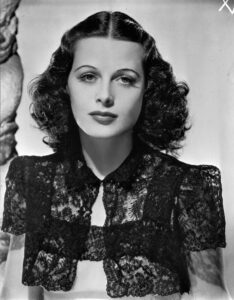
Source: Los Angeles Times
via Wikimedia Commons
Are you using your Wi-Fi or Bluetooth to read this story? You might have Hedy Lamarr to thank. She is best known for her high-profile career as an actress in the Golden Age of Hollywood, but her engineering accomplishments, which led to the development of such technologies, are arguably her greatest legacy.
Lamarr was born in Austria to a wealthy, Jewish family. In 1937, she moved to London, fleeing both an abusive husband and the advance of Nazism. There she met Louis B. Mayer, the co-founder of MGM who was born to a poor, Jewish family in Russia. Mayer offered her an acting contract in Hollywood. Lamarr’s film career took off quickly, with magazines heralding her as “the most beautiful woman in the world.”
Privately, Lamarr nurtured her passion for inventing despite her lack of formal education. She even volunteered to join the National Inventors Council during WWII, but she was directed to campaign for war bonds instead. After hearing about radio-controlled torpedoes being jammed, Lamarr and her friend George Antheil co-developed and patented a “secret communication system” for “frequency hopping” to prevent the enemy from blocking radio waves. The military never used her idea as she intended, but the concept she invented was fundamental to the development of technologies like Bluetooth and Wi-Fi. During her life, Lamarr was mostly known for her film roles playing glamorous women, but in 2014 she was posthumously given the recognition she deserved for her intellect when she was inducted into the National Inventors Hall of Fame. As Lamarr once said, “The brains of people are more interesting than the looks, I think.”
Elisabeth Kubler-Ross, Psychiatrist / Activist, 1926 – 2004
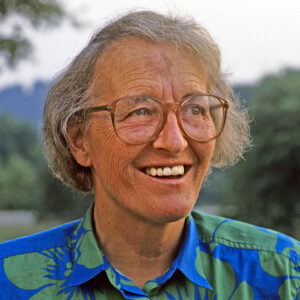
Source: Wikimedia Commons
Elisabeth Kubler-Ross’ adolescence in World War II-era Europe heavily influenced her groundbreaking work creating the five stages of grief model and revolutionizing end-of-life care. Her relief work as a young person exposed her to concentration camp survivors and severely wounded refugees, sparking an interest in caring for the ill, injured and dying. Kubler-Ross immigrated to the United States from Switzerland to study psychiatry. When she worked in a hospital as a psychiatric resident, she was horrified by the disregard she saw for patients with terminal diagnoses, then referred to as “hopeless patients.” The new protocol she developed for treating dying patients significantly improved their mental health in 94 percent of cases. Kubler-Ross went on to create the theory of the five stages of grief, which suggests that grieving people experience denial, anger, bargaining, depression and acceptance.
Her work helped create a dramatic transformation in hospice care in the United States. Her efforts were timely, popularizing the idea of organized and compassionate end-of-life care shortly before the onset of the AIDS crisis. Kubler-Ross attempted to create a hospice for abandoned children and infants with AIDS, but locals protested and her home was burned down in a possible arson attack. When her health declined, Kubler-Ross declared that she was ready to accept her own death, memorably stating in an interview that, “I told God last night that he’s a damned procrastinator.”
Isabel Allende, Writer, 1942 –
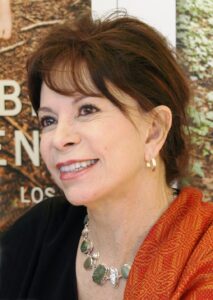
Source: Mutari via Wikimedia Commons
Isabel Allende, the world’s best-read Spanish-language writer, was born into a privileged Chilean family. After General Augusto Pinochet overthrew President Salvador Allende, who was also Isabel Allende’s uncle, her family and their peers found themselves facing political persecution. Allende helped smuggle families who were targeted by the dictatorship out of the country and was eventually forced to flee to Venezuela herself. While in Venezuela, she worked as a reporter but didn’t gain widespread recognition as a writer until she turned to novels. Her debut book, The House of Spirits, began as a letter to her dying grandfather in Chile, whom she couldn’t visit without risking political violence. The House of Spirits was a breakthrough triumph, receiving enormous critical acclaim and commercial success.
Allende moved to the United States in 1987 and continued writing many novels, memoirs and essays. She is an outspoken feminist focused on women and girls in the developing world. Her TED Talk on creativity and feminism has been viewed more than 120,000 times. Allende’s books have sold more than 74 million copies around the world in more than 40 languages. After her daughter died tragically young, she started the Isabel Allende Foundation in her honor to support women and girls in both the United States and Chile. In recognition of her work, President Obama awarded her the Presidential Medal of Freedom in 2014.
Grace Jones, Model / Singer / Icon, 1948 –

Source: Stuart Sevastos via Flickr
What do Madonna, Björk, Beyoncé and Lady Gaga have in common? According to Kyle Munzenrieder of W magazine, they have all “taken more than a few pages from her [Grace Jones’] playbook.” Jones came to the United States with her family from Jamaica while she was a child. She started her modeling career at 18 and quickly became known for her androgynous style, angular features and dark skin. Although none of these features were considered popular or desirable by a mainstream audience at the time, Jones’ unique look captured people’s imagination. Jones launched her music during the height of the disco era, and she quickly became a notable figure in disco culture. As the times changed, so did her music, moving into new wave, reggae and pop styles.
Jones broke gender and racial barriers that many others have walked through. Music critic Barry Walters wrote of her influence, “Her image celebrated blackness and subverted gender norms.” For all the famous, successful people she has inspired, Jones told The New York Times in 2015 that she doesn’t find imitation the highest form of flattery because her “whole view is being unique and finding yourself.” From her first job as a model to her 2021 concert tour, perhaps Jones’ greatest influence has been inspiring people to be themselves.
For more stories of extraordinary Black immigrants, check out our Black History Month blog post featuring seven famous immigrants from Africa and the Caribbean.
Azar Nafisi, Writer, 1948 –
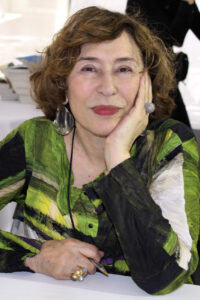
Source: Larry D. Moore via Wikimedia Commons
Azar Nafisi’s groundbreaking “memoir in books,” Reading Lolita in Tehran, has changed countless people’s perceptions of both the experiences of Iranian women and classic works of literature. As a young woman, Nafisi studied abroad in England, Switzerland and the United States, eventually obtaining her PhD in English and American literature and becoming an English professor in Tehran. Following the Iranian Revolution of 1979 and the ensuing crackdown on women’s rights, Nafisi struggled with restrictions on her work, including attempts to censor her curricula and demands that she wear a hijab. The latter expectation led her to leave her university and organize a secret study group for young women in her home. Under threat of reprisal from an increasingly authoritarian state, she persisted in providing an education for Iranian women who had few other options.
This experience formed the basis for Reading Lolita in Tehran: A Memoir in Books, which she published after finding her situation in Iran untenable and immigrating to the United States. The book was an immediate success, spending more than 100 weeks on the New York Times bestseller list. The book inspired fierce debates, translations into 32 languages and even an opera adaptation. Since the book’s publication, Nafisi has worked as a professor at Johns Hopkins University and published several more books. She has also received honorary doctorates from eight colleges and universities. Policy makers and human rights organizations have consulted her about issues related to human rights and Iran, and she has published articles on these topics in newspapers including the New York Times and Washington Post. Azar Nafisi has used her platform to advocate fiercely for the rights of other women, immigrants and refugees.
Martina Navratilova, Athlete / Advocate, 1956 –
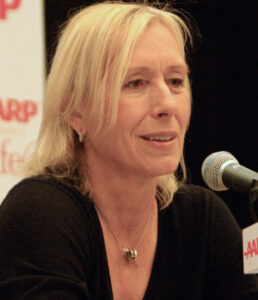
Source: Angela George
via Wikimedia Commons
Martina Navratilova is an undisputed champion. Over the course of her tennis career, she’s won 59 major championships, including one just shy of her 50th birthday, and a world-record 167 singles titles. By the time she retired, she had lost just 13 percent of her matches.
Pursuing this extraordinary career required defecting from Czechoslovakia, then part of the Soviet Union, for the United States when she was just 18. The move divided her from her family for years, but she couldn’t tolerate the Czech government’s decree that she reduce her commitment to tennis because she had become too “Americanized” in her touring.
Navratilova was not openly gay early in her career, in part because it would have prevented her from obtaining her U.S. citizenship. After being outed against her will in 1981, she became an outspoken advocate for gay rights. She spoke out about the AIDS crisis, despite the endorsement deals it cost her, participated in a lawsuit against an anti-gay ballot measure and protested the Don’t Ask, Don’t Tell policy.
When she reclaimed her Czech citizenship in 2008 to make it easier to visit family and do business in the Czech Republic, she described her relationship to her new and old homes:
I love my birth country and the fact that it is now a free country and a true democracy. But my home is here, in the U.S. I have lived in America since 1975 and I intend to always live here. This is my home and it feels almost gratuitous to me that I have to affirm my love for the USA. I live here, I vote here, I pay my taxes here and yes, I will do my jury duty.
-Martina Navratilova
Salma Hayek, Actress / Producer, 1966 –

Source: Harald Krichel
via Wikimedia Commons
Salma Hayek’s career as an actor and producer has broken ground for Latinas and Arab-American women, but her bravery in speaking up and exposing sexual harassment and abuse in the entertainment industry has impacted women of all backgrounds in all walks of life. Most famously, she publicly shared her experiences with Harvey Weinstein in the first months of the #MeToo movement, writing that, “Men sexually harassed because they could. Women are talking today because, in this new era, we finally can.”
As a telenovela star in her mid-20s, Salma Hayek took the enormous risk of moving from Mexico to the United States to advance her acting career despite her lack of connections and limited English. She struggled with Hollywood directors who found casting a Mexican-American lead “inconceivable” and visa problems that briefly left her undocumented. Her unrelenting efforts paid off when she produced and played the lead in her film Frida about the famous Mexican painter Frida Kahlo. Hayek led the film to critical and commercial success and garnered an Academy Award nomination for Best Actress.
Since then, she has focused on producing and acting in projects that highlight the Latinx experience including the movie In the Time of the Butterflies and the television show Ugly Betty. Hayek’s father is Lebanese-Mexican, a background she says makes her “very proud.” Her part in the Marvel movie Eternals made her the first Arab-American actor and one of the first Latinas to have a major role in the Marvel Cinematic Universe.
All Women Immigrants Deserve Recognition
Many of these famous women immigrants struggled to receive the recognition they earned. Countless more have made contributions to the United States that still go unrecognized. Women and immigrants have always been well-represented in health care and education, but this essential work is often underappreciated. During Women’s History Month, or any month, we encourage you to use these stories as a jumping off point to explore the stories of women and immigrants who historical narratives often leave out.
